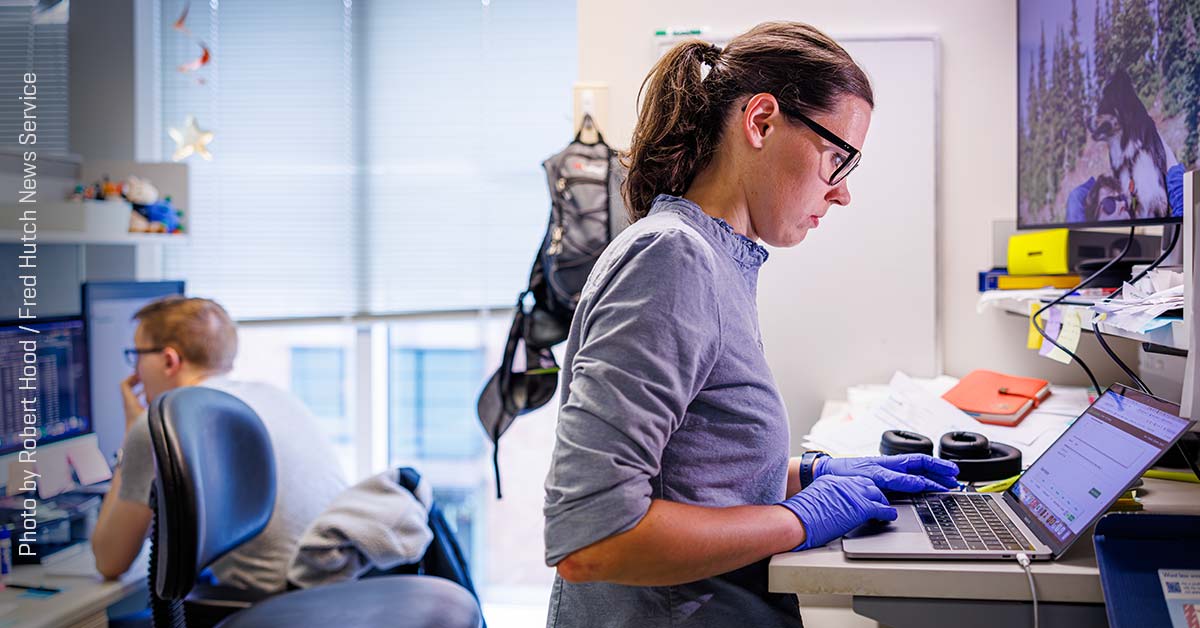Fitness
Getting a paw up in the cat-and-mouse game with the COVID-19 virus

For this study, Bloom’s team tested the effect of mutations on functions critical to the virus’ evolution, including the spike protein’s ability to grab onto an area on the surface of a human cell called ACE2 and bind to it.
They also tested mutations that could affect its ability to escape antibodies generated by vaccines or previous exposure to the virus, which often try to disrupt ACE2 binding to prevent infection.
To make the pseudovirus, they stripped a live virus commonly used in research and gene therapy down to its backbone, removing its ability to replicate while adding some features to streamline its use in a deep mutational scan.
Then, they made thousands of slightly different versions of the pseudovirus, genetically engineering each version to express a particular variant of the spike protein, allowing the team to measure the effects of 7,000 mutations in a single experiment.
To keep track of the mutations throughout the process, they tagged each variant with a unique genetic barcode. Think of it like the barcodes a library uses to keep track of its books as they are checked out, returned and re-shelved.
Then they grew stocks comprising millions of pseudovirus particles, each one loaded with its own barcode, to create a viral library.
They dripped this mutant brew onto little dishes containing human cells and antibodies sampled from people with varied immunization and infection histories.
Instead of exposing the cells to one mutation at a time, they exposed them to the whole library of 7,000 barcoded mutations in a single experiment.
The next day, they collected the infected cells from the dishes and sequenced their genomes to see which of those pseudovirus particles managed to escape the antibodies and infect the cells.
Then they crunched that huge dataset, using computer analysis to search for those barcodes to see which of the 7,000 mutations made a difference.
Finding the mutations that matter
The team was able to directly measure which mutations matter for escaping antibodies and made a surprising discovery.
Many antibodies focus on trying to prevent the grabby part of the virus (the receptor-binding domain, or RBD) from grabbing onto the ACE2 area on the surface of a human cell.
As expected, many relevant mutations occur in or near the RBD to get around those antibodies.
But the team also found mutations well outside the RBD that mattered, too. The strongest of those distant mutations appears to move the RBD into an up or down position.
The RBD needs to be in the up position to grab ACE2 and bind to it, but when it’s up, it’s also vulnerable to attack. Moving the RBD down makes it easier for the virus to escape getting neutralized by antibodies, but that means it can’t bind to ACE2 and infect the cell.
“Some mutations that might be very good for receptor-binding might be very bad for neutralization, and vice versa,” said lead author Bernadeta Dadonaite, PhD, a staff scientist in the Bloom Lab. “Evolution figures out what is the exact balance of how much you need to be in the up position and how much you need to be in the down position.”
Somehow that balance of mutations moves the RBD like the periscope on a submarine, raising it for cell attack and lowering it for a stealthy escape.
This escape mechanism happens often enough that it should be monitored, according to the study.
“It’s always a cat and mouse game,” Dadonaite said. “We can try to do many things, but in the end, evolution will still push the virus to figure out how to escape whatever we do.”
Mutations like the RBD periscope that help their pseudovirus escape antibodies also appear in the most successful variants of SARS-CoV-2, partially explaining how they have thrived despite our growing immunity and multiple vaccinations.
The Bloom Lab takes that as an encouraging sign that its scanning method has matured enough to generate useful predictions about what the real virus will do next to stay ahead.
It could provide watch lists of potentially dangerous mutations for other researchers who are tracking the spread of SARS-CoV-2 and other viruses, such as computational biologist Trevor Bedford, PhD in the Vaccine and Infectious Disease Division at Fred Hutch, who is a co-author on the study.
“I don’t want to oversell it because it’s a complicated problem to predict how viruses are going to evolve,” Bloom said. “The idea is to have something that can help you interpret what’s happening as it’s happening.”
This work was supported by grants from the National Institutes of Health, a Pew Biomedical Scholars Award, an Investigators in the Pathogenesis of Infectious Disease Awards from the Burroughs Wellcome Fund, the University of Washington, Arnold and Mabel Beckman Center for Cryo-EM, shared resources of the Fred Hutch/University of Washington/Seattle Children’s Cancer Consortium, SciLifeLab’s Pandemic Laboratory Preparedness programme and the Erling Persson Foundation.










